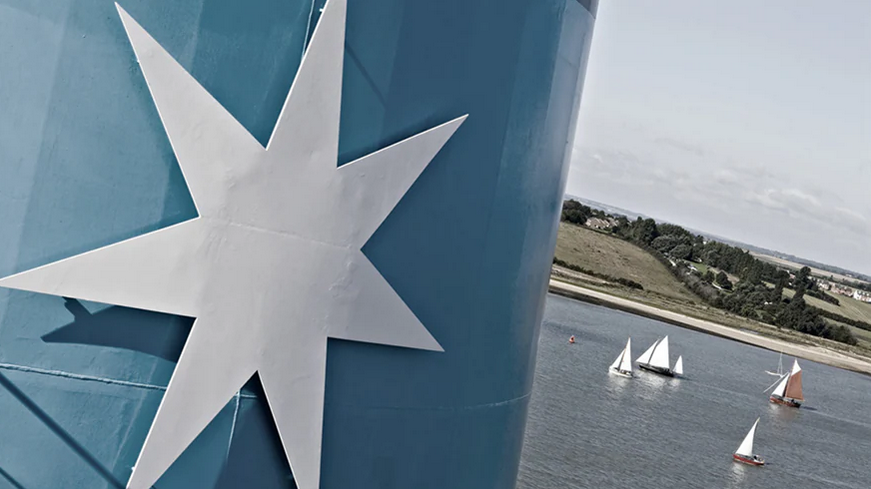A.P. Moller-Maersk, the world’s largest shipping company, is looking into the potential use of hydrogen as fuel for some vessels and is also in talks with some green methanol producers to secure supplies as it seeks to decarbonize its fleet, a company official said Nov. 24.
Although green methanol is the company’s favorite decarbonization fuel, hydrogen may be used for certain vessels, but would be problematic for deep-sea ships, Maria Strandesen, head of future fuels at Maersk told the Global Manufacturing and Industrialization Summit in Dubai.
“We are looking at our vessels that have a maximum roundtrip of 2,000 km — we don’t have many of those — but we do have a few there [and] we are actually looking whether hydrogen could be used as fuel,” Strandesen said. “My team’s main headache is to figure out solutions for the deep sea going vessels and there hydrogen is simply not an option and that is based purely on the fact it takes too much cargo space.”
Depending on how much hydrogen is compressed and how much it is cooled, Maersk would require tanks that are as much as 15 times the current size, she added. That’s why the shipping company is looking for liquid fuels for its deep sea going vessels, she said.
Maersk plans to use its first carbon neutral container vessel in 2023, to be followed by another eight vessels that will run on green methanol.
S&P Global Platts launched daily anhydrous ammonia cargo price assessments in October. Ammonia was assessed at $54.00/MMBtu Nov. 23 (CFR, Northwest Europe), up 25% since launch Oct. 12.
Platts assessed the price of hydrogen (Netherlands, PEM electrolysis) at Eur14.13/kg Nov. 23, up 215% since the start of the year.
First carbon-neutral vessel
Maersk signed an agreement with South Korea’s Hyundai Mipo Dockyards to a build a feeder vessel capable of sailing either on methanol, or very low sulfur fuel oil, it said July 1.
The vessel, which will be powered by carbon-neutral methanol, is expected to be delivered to Maersk by mid-2023, have a capacity of 2,100 twenty-foot equivalent units (TEU) and will be deployed on the Baltic shipping route.
Maersk is targeting a 60% relative CO2 reduction from shipping by 2030 and hopes to achieve net-zero CO2 emissions by 2050.
The company is currently in talks with green methanol producers to secure supplies for these vessels, Strandesen said.
“We are of course are on the task of securing green methanol for nine vessels for 2023-2024,” she said. “They need almost 400,000 tons of green methanol per year as of 2024. I think we have more than 40 green methanol up and coming producers on the list to talk [to]. On the other fuel options, we do hope that we do to get more clarity on ammonia as a potential fuel for the next 12 months.”
Ammonia usage
For ammonia, the company is looking at safety concerns for using the fuel in its vessels. Maersk is also looking at carbon-neutral fuel for its existing fleet, although it could retrofit vessels and convert them to use methanol as fuel, she said.
Maersk would like to see a global carbon tax of $150/mt CO2e by 2025, which is equivalent to around $450-$500/mt of shipping fuel.
“We do also spend quite a lot of time on pushing the IMO (the International Maritime Organization) for introducing a world-wide carbon tax,” Strandesen said. “We would like the carbon tax to be phased in for 2023 of $50/mt , [and] fully in place in 2025 at $150/mt.”
Being one of the largest shipping companies in the world, Maersk is also one of the biggest consumers of oil derived bunker fuel.
The group consumed 10.37 million mt of bunker fuels last year, according to its 2020 sustainability report. This includes fuel oil, heavy fuel, marine diesel and marine gasoil.
The shipping sector — representing around 3% of total EU greenhouse gas emissions — has come under increased pressure to decarbonize.
Source: Platts

